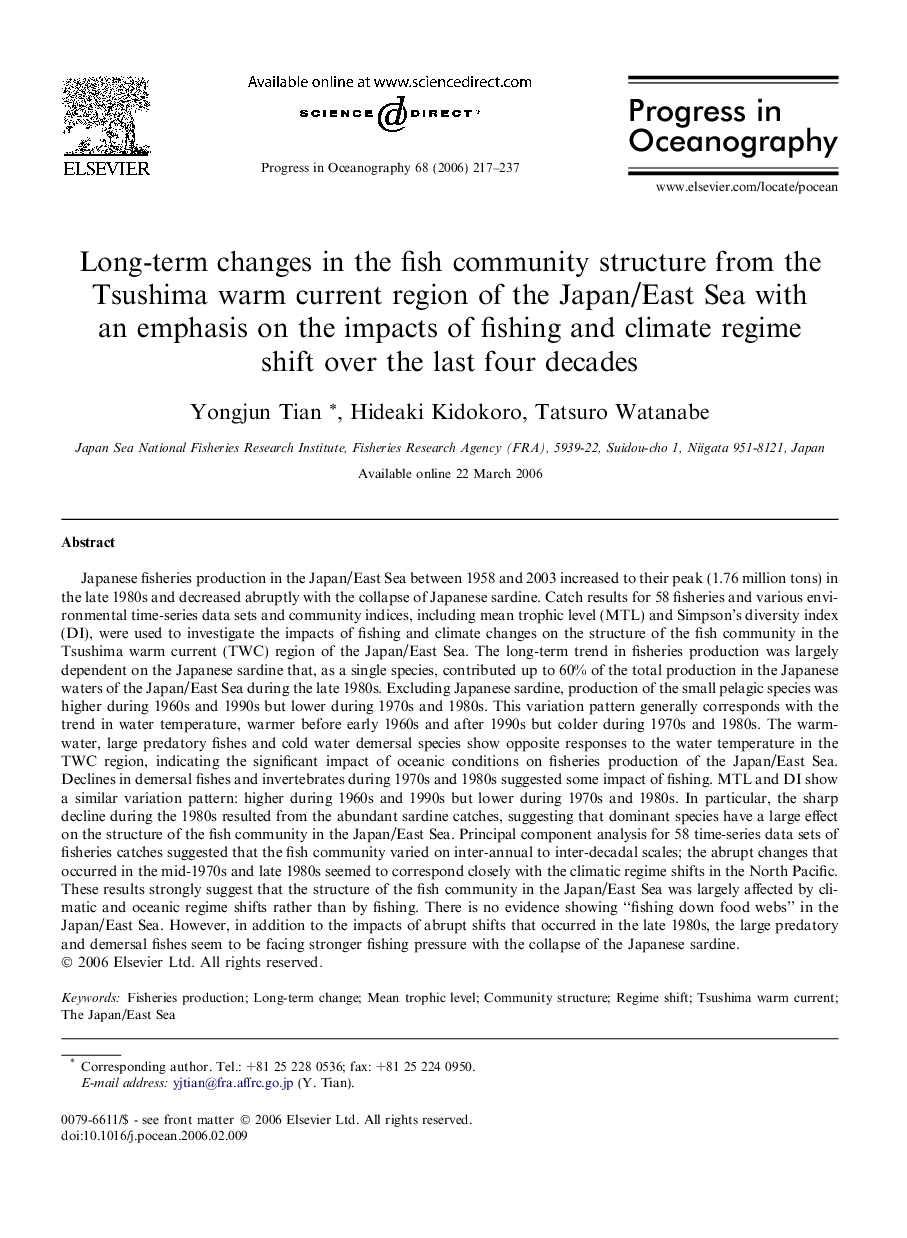| کد مقاله | کد نشریه | سال انتشار | مقاله انگلیسی | نسخه تمام متن |
|---|---|---|---|---|
| 4553981 | 1627977 | 2006 | 21 صفحه PDF | دانلود رایگان |

Japanese fisheries production in the Japan/East Sea between 1958 and 2003 increased to their peak (1.76 million tons) in the late 1980s and decreased abruptly with the collapse of Japanese sardine. Catch results for 58 fisheries and various environmental time-series data sets and community indices, including mean trophic level (MTL) and Simpson’s diversity index (DI), were used to investigate the impacts of fishing and climate changes on the structure of the fish community in the Tsushima warm current (TWC) region of the Japan/East Sea. The long-term trend in fisheries production was largely dependent on the Japanese sardine that, as a single species, contributed up to 60% of the total production in the Japanese waters of the Japan/East Sea during the late 1980s. Excluding Japanese sardine, production of the small pelagic species was higher during 1960s and 1990s but lower during 1970s and 1980s. This variation pattern generally corresponds with the trend in water temperature, warmer before early 1960s and after 1990s but colder during 1970s and 1980s. The warm-water, large predatory fishes and cold water demersal species show opposite responses to the water temperature in the TWC region, indicating the significant impact of oceanic conditions on fisheries production of the Japan/East Sea. Declines in demersal fishes and invertebrates during 1970s and 1980s suggested some impact of fishing. MTL and DI show a similar variation pattern: higher during 1960s and 1990s but lower during 1970s and 1980s. In particular, the sharp decline during the 1980s resulted from the abundant sardine catches, suggesting that dominant species have a large effect on the structure of the fish community in the Japan/East Sea. Principal component analysis for 58 time-series data sets of fisheries catches suggested that the fish community varied on inter-annual to inter-decadal scales; the abrupt changes that occurred in the mid-1970s and late 1980s seemed to correspond closely with the climatic regime shifts in the North Pacific. These results strongly suggest that the structure of the fish community in the Japan/East Sea was largely affected by climatic and oceanic regime shifts rather than by fishing. There is no evidence showing “fishing down food webs” in the Japan/East Sea. However, in addition to the impacts of abrupt shifts that occurred in the late 1980s, the large predatory and demersal fishes seem to be facing stronger fishing pressure with the collapse of the Japanese sardine.
Journal: Progress in Oceanography - Volume 68, Issues 2–4, February–March 2006, Pages 217–237